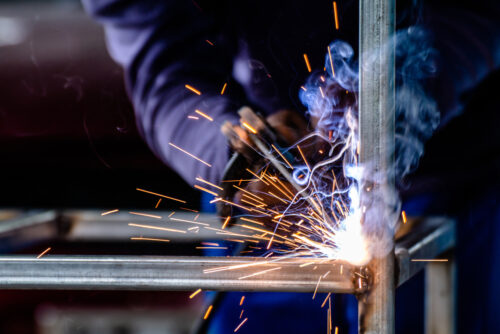Recognizing the Various Types of Welding Techniques and Providers Offered

Introduction of Welding Methods
Welding strategies encompass a varied variety of techniques made use of to join materials together completely. One typical method is arc welding, which involves producing an electrical arc in between the base and an electrode product to thaw and fuse them together. This method is flexible and can be used with various metals, making it one of one of the most widely utilized welding processes.

In addition, TIG welding, or Gas Tungsten Arc Welding (GTAW), is a specific and tidy welding technique that uses a non-consumable tungsten electrode to produce the weld. TIG welding is frequently used for thinner products and supplies outstanding control over the welding procedure. In general, understanding these different welding methods is vital for picking one of the most ideal technique for different projects.
Typically Used Welding Methods
A variety of commonly utilized techniques are used in the area of welding to properly join materials together. One of the most widely used methods is Gas Steel Arc Welding (GMAW), also referred to as MIG welding. This technique utilizes a wire electrode that is fed with a welding weapon, together with a securing gas to secure the weld from pollutants airborne. An additional common technique is Secured Steel Arc Welding (SMAW), or stick welding, which uses a flux-coated electrode to produce the weld. Tungsten Inert Gas (TIG) welding is preferred for its accuracy and convenience, utilizing a non-consumable tungsten electrode to generate the weld. Flux-Cored Arc Welding (FCAW) is frequently utilized in industrial setups due to its high welding rate and transportability. Additionally, Submerged Arc Welding (SAW) is excellent for producing deep welds on thick materials. These frequently used welding techniques cater to various needs and products, giving options for different welding applications.
Advanced Welding Services
Structure upon the structure of generally made use of welding approaches, the world of innovative welding solutions encompasses innovative methods and modern technologies that push the borders of accuracy and efficiency in product signing up with processes. Advanced welding solutions frequently include specialized approaches such as laser welding, electron light beam welding, and friction mix welding. Friction stir welding, a solid-state signing up with process, allows the welding of products that are testing to fuse using traditional methods, like light weight aluminum and copper.
Specialized Welding Methods

One more specialized welding technique is laser beam welding, where a very focused beam of light is used to join metals with very little heat-affected zones and distortion. This method is commonly employed in sectors needing high precision and tidiness, such as electronic devices and clinical device manufacturing. In addition, explosive welding is an unique technique that utilizes controlled dynamites to bond dissimilar metals with each other, creating strong and dependable joints. These specialized welding techniques showcase the diversity and technology existing in the area of welding, offering remedies for a vast array of commercial applications.

Picking the Right Welding Process
Selecting the proper welding procedure is vital in achieving ideal results in steel construction and signing up with procedures. With different welding methods available, it is crucial to consider factors such as the type of steel, thickness, joint style, and desired outcome when selecting the ideal welding procedure - Welding Inspection Service. Among you can try this out the common welding approaches are Gas Metal Arc Welding (GMAW), Secured Metal Arc Welding (SMAW), Gas Tungsten Arc Welding (GTAW), and Flux-Cored Arc Welding (FCAW) GMAW, likewise called MIG welding, appropriates for welding thin to thick metals and is functional in various positions. On the other hand, SMAW, or stick welding, is a dependable technique for exterior and area welding because of its mobility and simpleness. GTAW, or TIG welding, is perfect for welding thin materials and provides precise and top quality welds. FCAW is preferred for welding thick materials and is recognized for its high welding speeds. Recognizing the features of each welding procedure is necessary in picking the most ideal technique for a particular welding task.
Verdict
Finally, understanding the different sorts of welding strategies and solutions offered is crucial for selecting the right technique for a specific job. By being conscious of the generally used welding approaches, progressed welding services, and specialized strategies, people can make informed choices to ensure the success of their welding tasks. It is important to consider aspects such as materials, project demands, and budget plan when picking the most suitable welding process.
From standard techniques like stick welding to cutting-edge procedures such as laser welding, the world of welding uses a wide range of alternatives for signing up with metals with each other.Furthermore, TIG welding, or Gas Tungsten Arc Welding (GTAW), is a tidy and exact welding technique that makes use of a non-consumable tungsten electrode to develop the weld. Advanced welding services commonly include specialized approaches such as laser welding, electron light beam welding, and rubbing stir welding. Amongst the usual welding methods are Gas Steel Arc Welding (GMAW), Shielded Metal Arc Welding (SMAW), Gas Tungsten Arc Welding (GTAW), and Flux-Cored Arc Welding (FCAW) By being mindful of the generally used welding methods, progressed welding services, and specialized strategies, people can make educated decisions to make sure the success of their welding tasks.